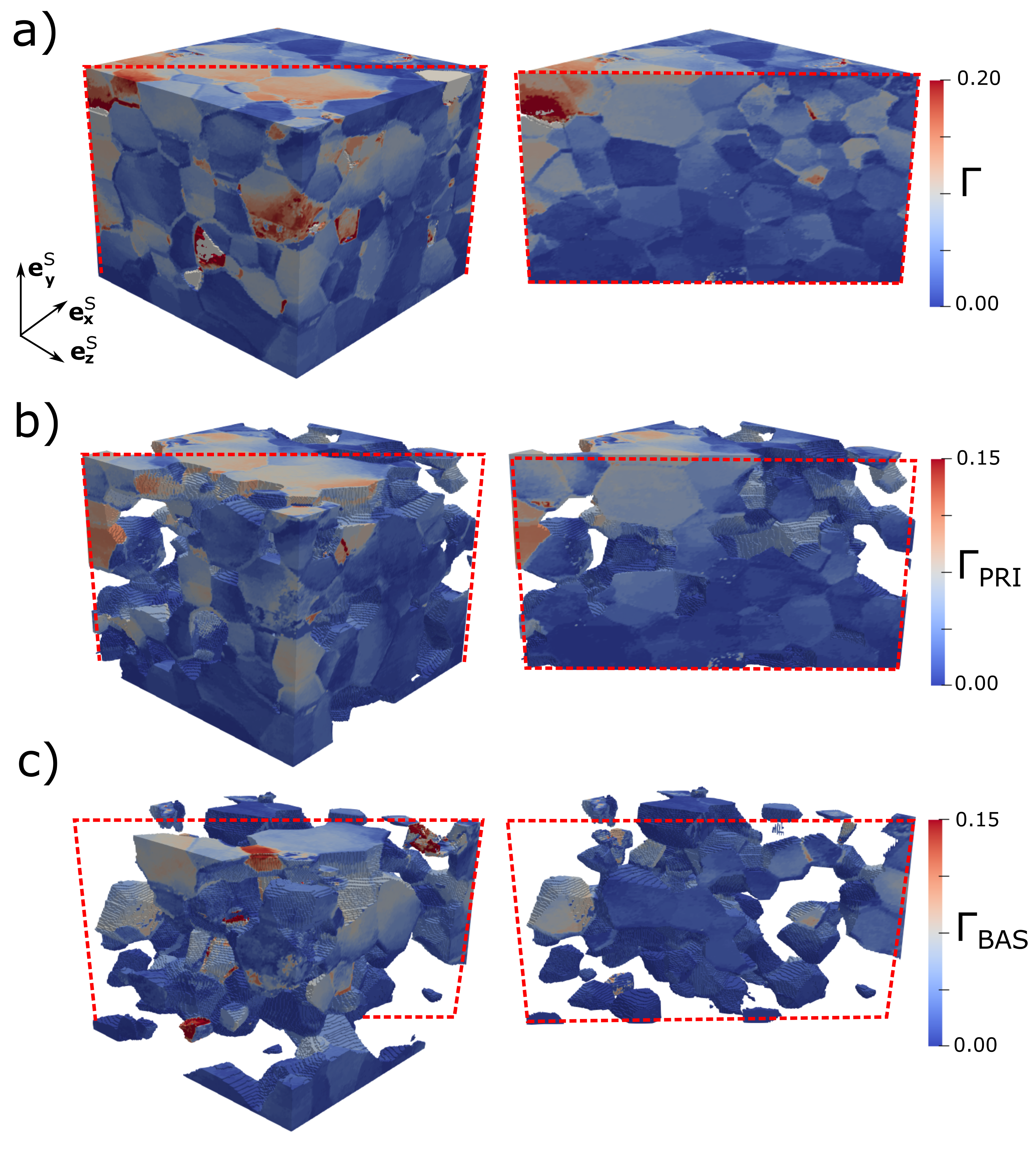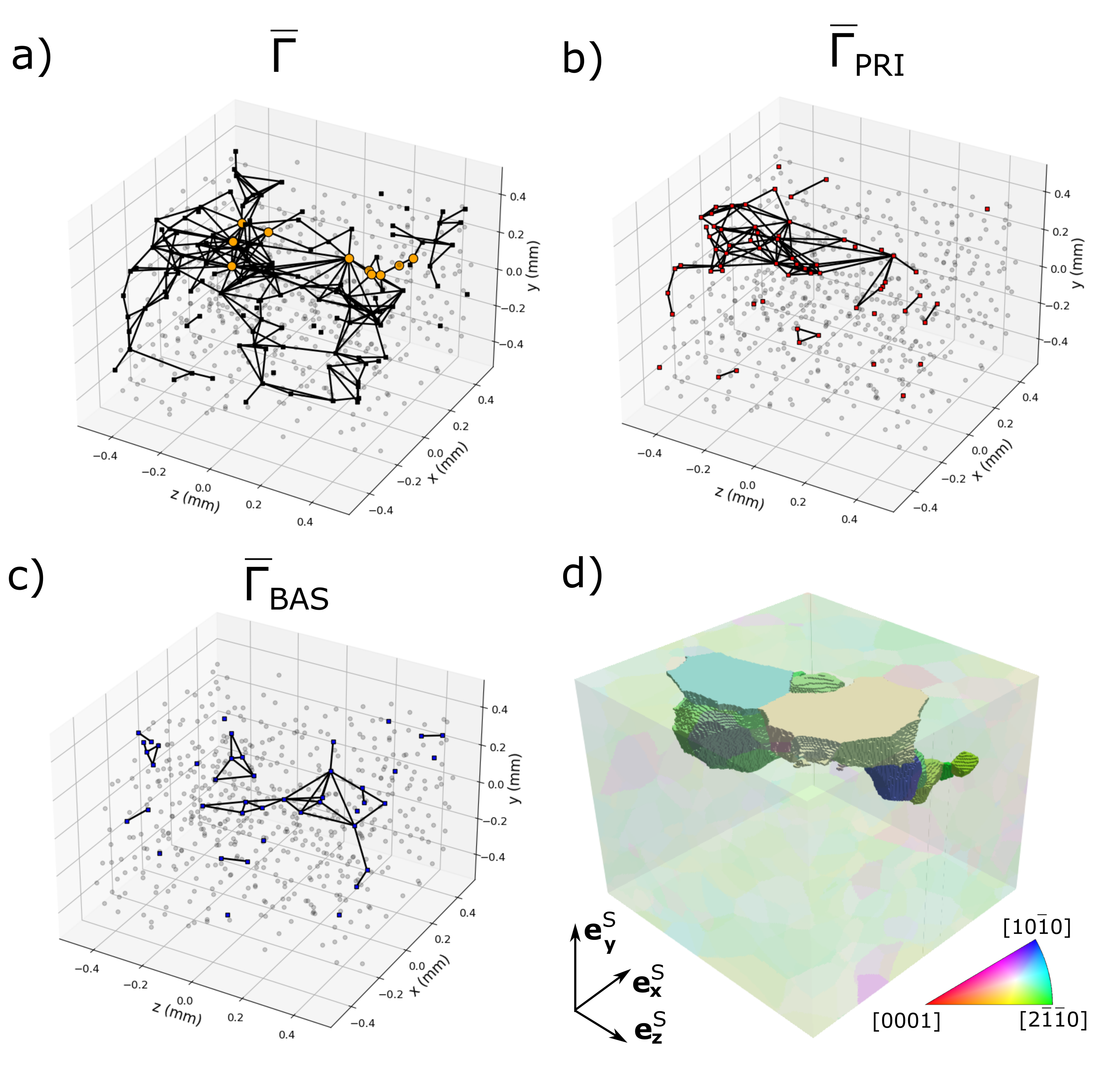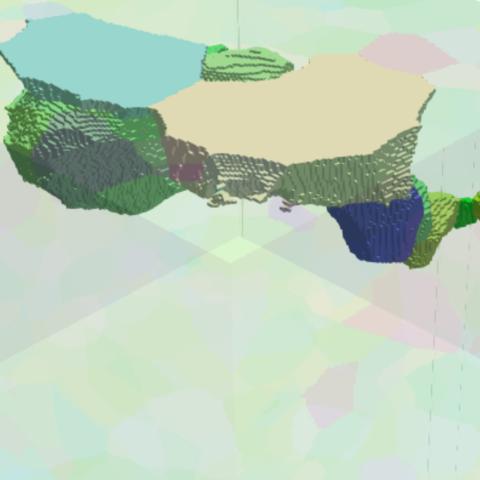What is the discovery?
For the first time, a microscale plastic strain field (also known as crystallographic slip) has been non-destructively reconstructed in 3D in a deforming alloy (Fig. 1). Slip propagating across sets of crystals was observed in the alloy Ti-7Al using high-energy x-ray beams, while it was plastically deformed in uniaxial tension. Analysis of a `slip network’ identified from the 3D reconstruction indicated that deformation in the entire samples propagated through a subset of grains oriented to be `soft’ relative to the loading direction (Fig. 2). Subsets of soft grains (macrozones) have long been hypothesized to play a major role in the deformation of titanium alloys, but this research directly confirms for the first time how deformation propagates across a macrozone. This breakthrough was achieved through a collaboration CHEXS and MSN-C researchers, including CHEXS alumni and lead author Darren Pagan (now of Penn State University), MSN-C scientist Kelly Nygren, and Prof. Matthew Miller (CHEXS / MSN-C / MAE).

Why is it important?
Understanding how plastic deformation propagates through engineering alloys is critical for testing theories of fracture and fatigue failure. Impedance of plastic deformation across grain boundaries is believed to lead to stress concentrations. These in-turn serve as failure nucleation points. The capability presented here can be used to directly understand the conditions that lead to failure in numerous alloy systems.
Why did this research need CHEXS?
CHESS is one of only three facilities in the world capable of performing high-energy X-ray diffraction microscopy measurements (HEDM), and the only facility capable of performing seamless multi-modal far-field and near-field HEDM variant data processing on a single specimen. These capabilities are developed in tandem at the FAST (CHEXS) and SMB (MSN-C) beamlines. CHEXS users can access SMB via the “hutch-swap” program, and vice-versa. The ability to simultaneously perform far-field and near-field HEDM allowed the researchers to understand both the micromechanical stress state driving deformation and the full 3D reorientation of the crystal lattice during plastic deformation. Together, these measurements allowed the researchers to reconstruct the plastic strain field present within the deforming titanium alloy.

How was the work funded?
The Center for High Energy X-ray Sciences (CHEXS), NSF (DMR-1829070)
ONR, United States DoD, contract N00014-16-1-2982
Air Force Research Laboratory, contract FA8650-19-2-5220
Reference:
Pagan, D.C., Nygren, K.E., Miller, M.P., “Analysis of a three-dimensional slip field in a hexagonal Ti alloy from in-situ high-energy X-ray diffraction microscopy data” Acta Materialia. Volume 221. 117372 (2021) https://doi.org/10.1016/j.actamat.2021.117372
